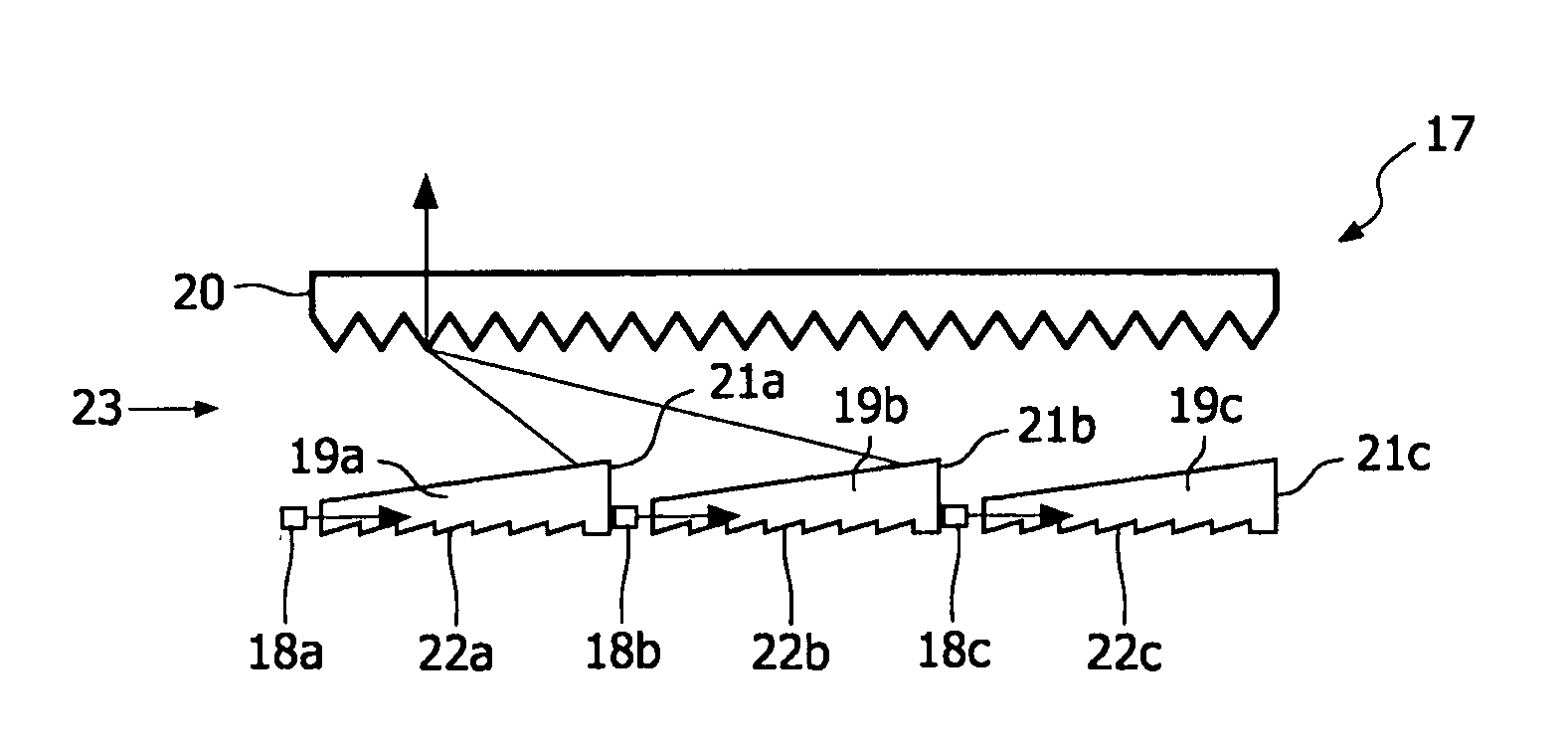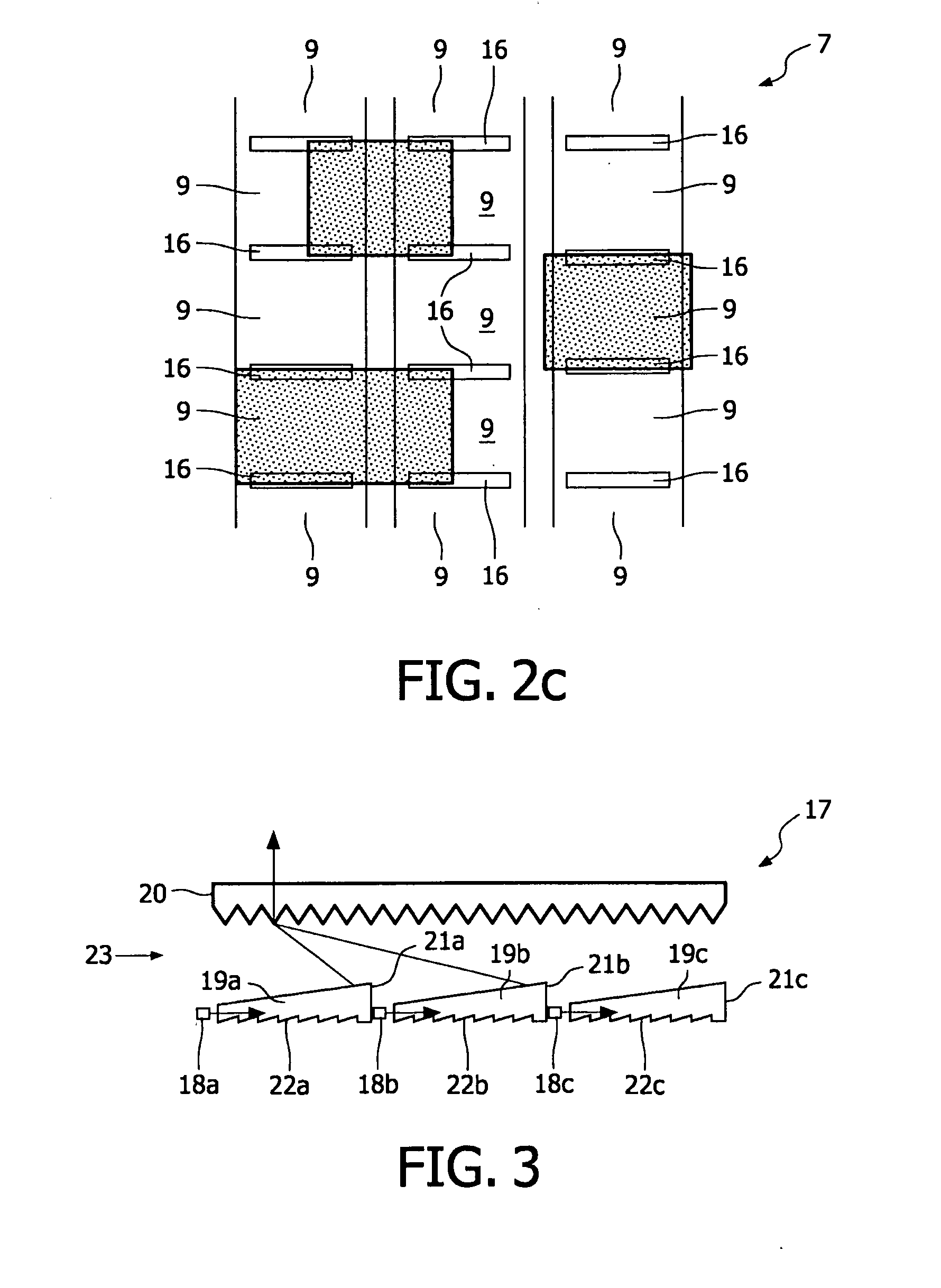Illumination system for illuminating a display device, and display device
a technology of illumination system and display device, which is applied in the direction of instruments, lighting and heating apparatus, optical elements, etc., can solve the problems of unsuitable segmentation and too sharp boundary, and achieve uniform (homogeneous) illumination, avoid visible artefacts, and the effect of thickness of illumination system
- Summary
- Abstract
- Description
- Claims
- Application Information
AI Technical Summary
Benefits of technology
Problems solved by technology
Method used
Image
Examples
Embodiment Construction
[0020]FIG. 1 shows a side view of a display device 1, such as an LCD, comprising an illumination system 2 known from the prior art. The known illumination system 2 comprises multiple LEDs 3 being positioned equidistantly from a stack of optical foils 4. Light 5 emitted by the LEDs 3 and received by the stack of optical foils 4 will partially be redirected as shown in the direction of the display device 1 and partially be reflected back towards the LEDs 3. The LEDs 3 can be selectively switched on and off, which enables dimming of the illumination system 2. To achieve a relatively uniform illumination of the display device 1, the LEDs 3 are positioned at a minimum distance d from the stack of optical foils 4, wherein d is at least approximately equal to or larger than the mutual distance p (pitch) between the LEDs 3, as a result of which the known illumination system 2 is relatively voluminous. Commonly the distance d (and the pitch p) will be between 2 and 5 cm.
[0021]FIG. 2a shows a...
PUM
 Login to View More
Login to View More Abstract
Description
Claims
Application Information
 Login to View More
Login to View More - R&D
- Intellectual Property
- Life Sciences
- Materials
- Tech Scout
- Unparalleled Data Quality
- Higher Quality Content
- 60% Fewer Hallucinations
Browse by: Latest US Patents, China's latest patents, Technical Efficacy Thesaurus, Application Domain, Technology Topic, Popular Technical Reports.
© 2025 PatSnap. All rights reserved.Legal|Privacy policy|Modern Slavery Act Transparency Statement|Sitemap|About US| Contact US: help@patsnap.com



